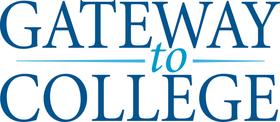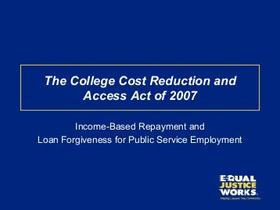STEM education (science, technology, engineering, and mathematics) has become the edge the U.S. needs to compete in the global workforce of the 21st century. How to get that education is now a source of discussion for business and education leaders. The shift from four-year schools to a two-year degree is a pronounced one, and while it may not be right for everyone, it is a key component in the economic health of this country. Are community colleges becoming the new leader in STEM education?
The Rise of STEM
Community College Week reported on 2012 data released by the President’s Council of Advisors on Science and Technology that suggested that if the U.S. is to remain a STEM leader, the country must produce one million more STEM graduates than current rates projects. The Atlantic reports that according to a 2011 STEM report from the Center on Education and the Workforce at Georgetown University, 92 percent of STEM workers will need post-secondary education by 2018. Around 35 percent of that number will require training at the community college level, while another 65 percent will need baccalaureate degrees.
STEM fields are extensive today, including a wide range of engineering and science industries. Some of the fields currently being transformed by innovations in science and technology include construction, advanced manufacturing, healthcare, biotechnology, transportation, and energy. STEM might include work with computers, electricity, biochemistry, statistics, engineering, and geography. There will also be a demand for teachers who can instruct up-and-coming students in these fields. With the exponential rise in technology in recent years, STEM touches nearly every industry across the nation in some way.
Undoubtedly, STEM is an important component for educating future generations. The question becomes, what is the most efficient way to train the next generation of STEM workers? It appears that community colleges are poised to handle a large portion of that training, with programs and degree options designed with specific industries in mind.
This video outlines the STEM program at MassBay Community College.
Community Colleges Picking Up STEM Slack
According to a recent Diverse Education report, many adults searching for specialized training in STEM fields are heading to community colleges to get that training today. This includes students who have already earned bachelor, master's, and even doctorate degrees. These students see community colleges as the path to making themselves more competitive in the job market.
“A lot of STEM fields are occupationally defined programs that lead directly to employment,” Chris Mullins, director for policy analysis with the American Association of Community Colleges, explained to Diverse Education. “With many of our two-year associate programs, students enter our colleges and immediately begin studying in the field that they plan to work in.”
Diverse Education cites statistics from the National Post-Secondary Student Aid Study, which showed eight percent of students entering community college already had some type of post-secondary education under their belts. The survey also found that around 849,000 students earned two-year degrees during the 2009-2010 school year, which was a more than 50 percent increase over the past decade. The increase in STEM degrees during the same period was 105 percent.
This video outlines the STEM program at Columbus State Community College.
Benefits of Earning Two-Year STEM Degrees
One of the biggest advantages to earning a STEM degree from a local community college is the networking abilities these schools have with the professional businesses in the area. Mullins told Diverse Education, “By having connections within local industries, it helps to ensure our programs align with employer expectations, especially since education is a large part of employment.”
The Huffington Post reports that community colleges have a knack for developing essential technical skills that meet the needs of the current workforce. For that reason, STEM industries like computer science and biotechnology rely on community college programs to supply the skilled workers they need to hire. Nearly half of the workers in the aerospace industry hold two-year degrees today. These skilled workers hold positions in large, well-known companies like Boeing and Lockheed Martin, working in maintenance, installation, and production departments.
When industries are at a loss for skilled workers to fill their positions, they are more frequently turning to community colleges to fit the bill. These schools are willing and able to draft curricula that specifically suit an industry and even a specific company within the local community. Students focus on their field from their first day in the classroom and graduate from their two-year or certificate program ready to hit the professional ground running.
Then, there is the ROI of a community college degree, which has proven even stronger in the wake of increased STEM opportunities. Diverse Education reports that the average annual cost of a community college education is just $3,000, compared to around $7,000 at a four-year school. The discrepancy is even more pronounced when you multiply that number by the years required to earn a degree.
However, a community college degree in a STEM field has the potential to bring in an average starting salary comparable to what a graduate of a four-year program can earn. For example, Diverse Education also reports that an entry-level aerospace engineering professional can earn an average annual salary of $58,000 with a two-year degree, which may be even more than the entry-level salaries of a four-year graduate.
As the focus shifts to community colleges for fulfilling the STEM needs of the 21st century, attitudes and stigmas involving two-year schools are also changing. These post-secondary institutions are becoming viable alternatives to a quality STEM education and a lucrative career.
Questions? Contact us on Facebook. @communitycollegereview











